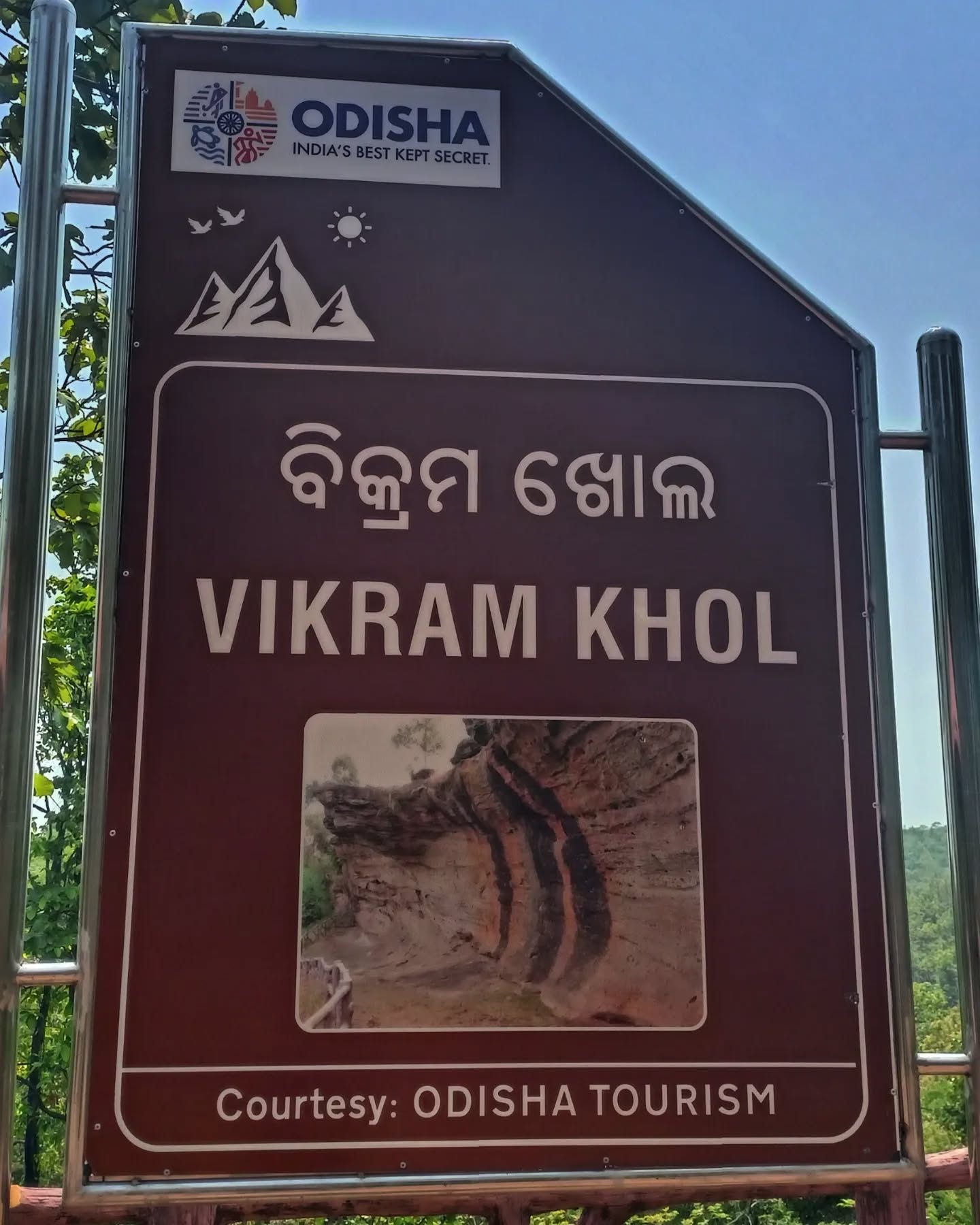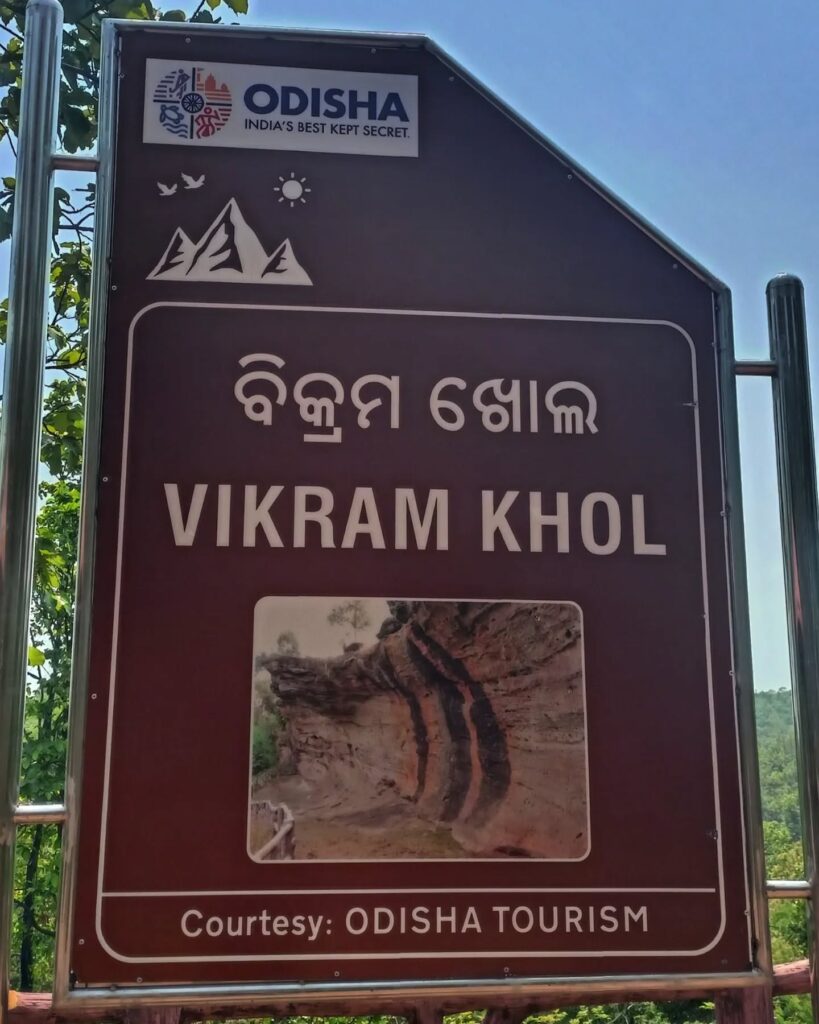
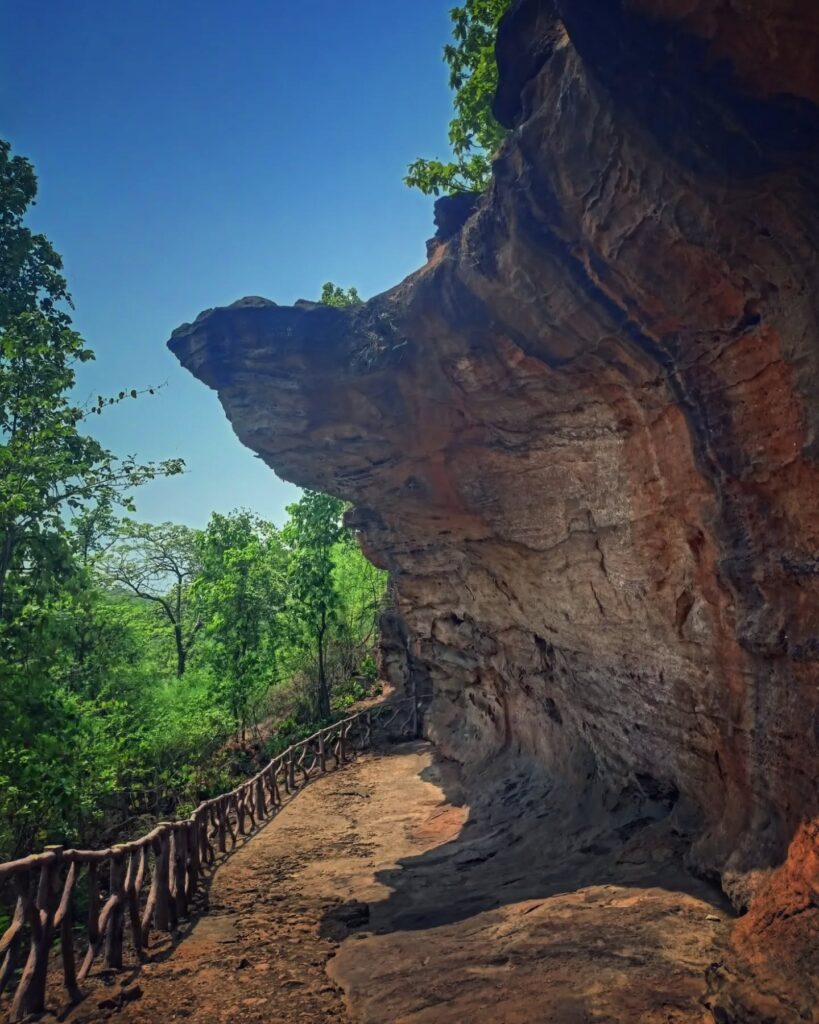
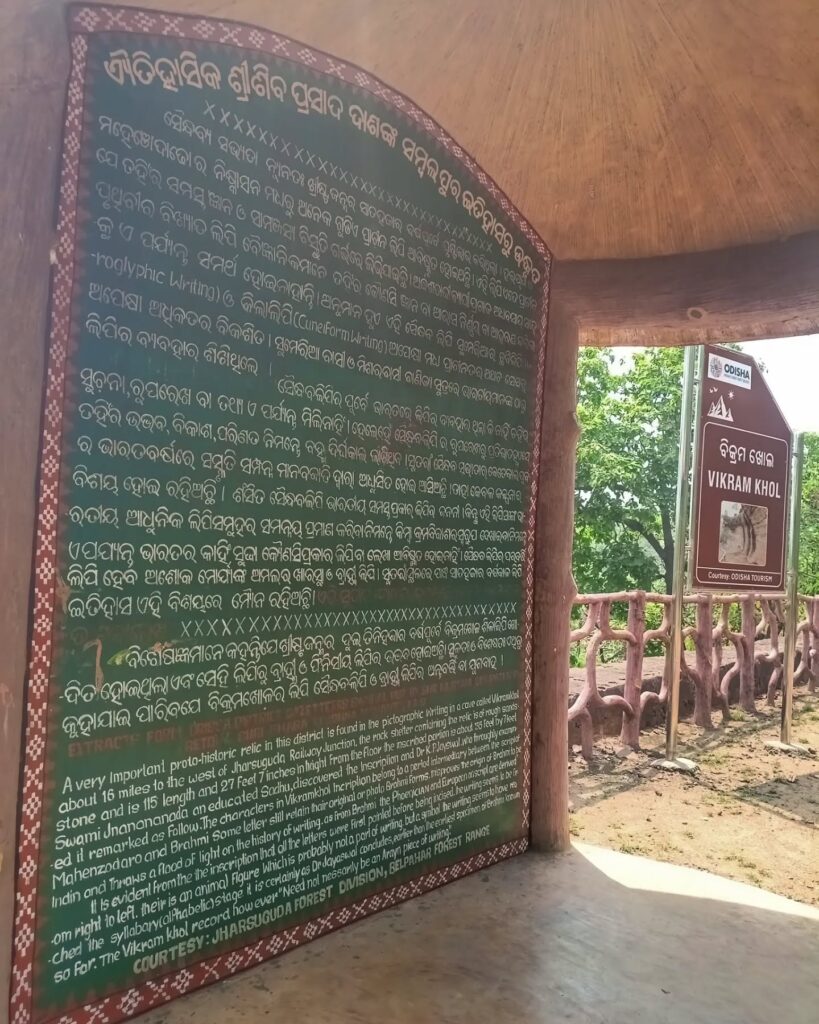
Bikramkhol Cave – Odisha’s Ancient Rock Script Legacy
Introduction: A Prehistoric Gateway to Civilization
Hidden within the serene hills and forests of western Odisha lies a little-known but incredibly significant archaeological treasure – Bikramkhol Cave. Located near Belpahar in Jharsuguda district, this ancient cave is believed to date back to 1500 BCE and is renowned for its prehistoric rock inscriptions, tools, and evidence of early human life.
While Odisha is more widely known for its temples, beaches, and Buddhist heritage, sites like Bikramkhol open a different window—one that takes us far beyond recorded history into the Neolithic age. The site is not just an archaeological wonder but also a symbol of the continuity of human expression, from stone to script.
🗺️ Location and Geography of Bikramkhol Cave
- Situated in: Banjari Hills, near the village of Bikramkhol, about 25 km from Jharsuguda town and 10 km from Belpahar.
- Region: Lakhanpur block, western Odisha.
- Surroundings: Covered by forests, sandstone cliffs, and hilly terrain. The cave is nestled at an elevation with a natural view of the Mahanadi basin.
This natural rock shelter is accessible via a small trek from the nearest motorable road, making it both an adventure and an exploration site.
🪨 Discovery and Archaeological Importance
Bikramkhol was first brought to light in 1933 by noted historian and archaeologist K.P. Jayaswal, who identified the site as a crucial link to early Indian scripts and proto-literate civilizations.
🔍 Key Archaeological Discoveries:
| Element | Description |
|---|---|
| Rock Inscriptions | Carved signs believed to be early scripts or symbolic language |
| Tools | Stone implements, chisels, and sharp tools used for carving |
| Animal Bones | Fossils and bone fragments, possibly from food remains |
| Cave Paintings (Faint Traces) | Early attempts at art using natural pigments (now faded) |
| Linguistic Evidence | Marks that hint at development of language before Brahmi script |
These findings suggest that Bikramkhol Cave was used for both living and ritualistic purposes by early human communities. The symbols are believed to predate Brahmi, India’s oldest formal script.
🧬 Dating and Chronology
Although exact dating remains under study, experts agree the cave inscriptions and tools are from the late Neolithic to early Chalcolithic period, roughly between 1500 BCE – 1000 BCE.
- Scripts: Non-Brahmi, possibly pictographic or symbolic.
- Technique: Carved using sharp-edged stone tools.
- Cultural Phase: Transition from nomadic life to settled agrarian society.
🔠 The Mystery of the Inscriptions
The rock carvings at Bikramkhol are perhaps its most captivating feature. They cover an inner wall of the cave and consist of:

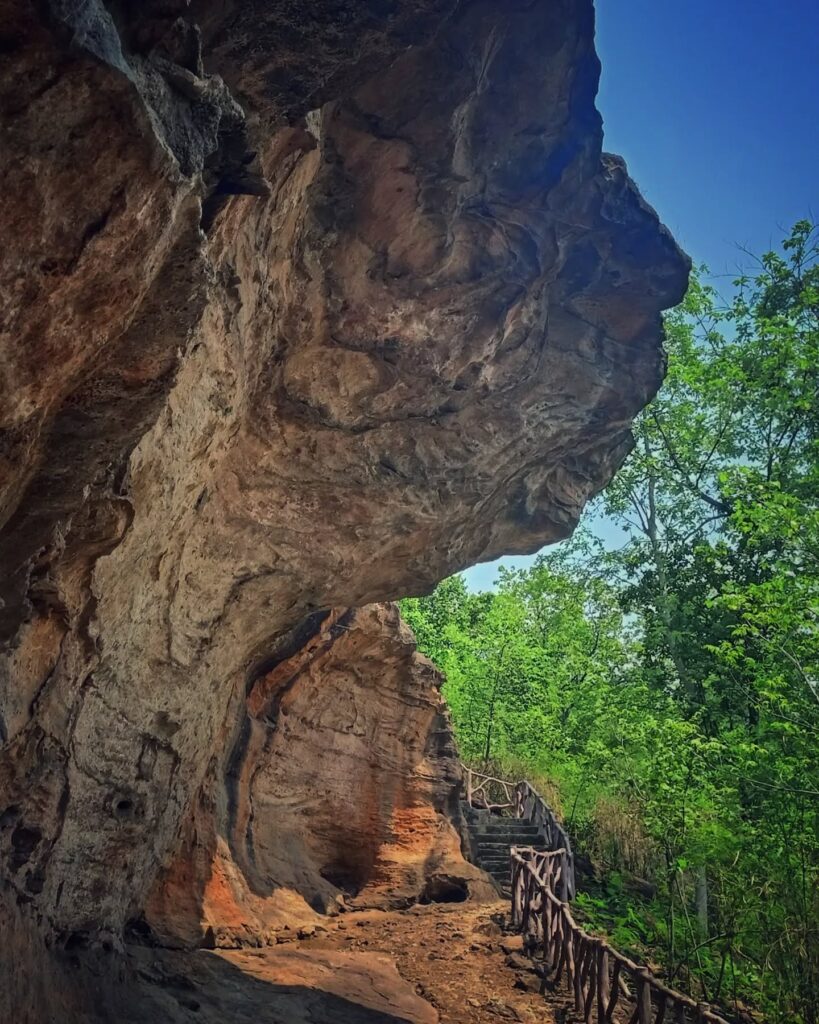
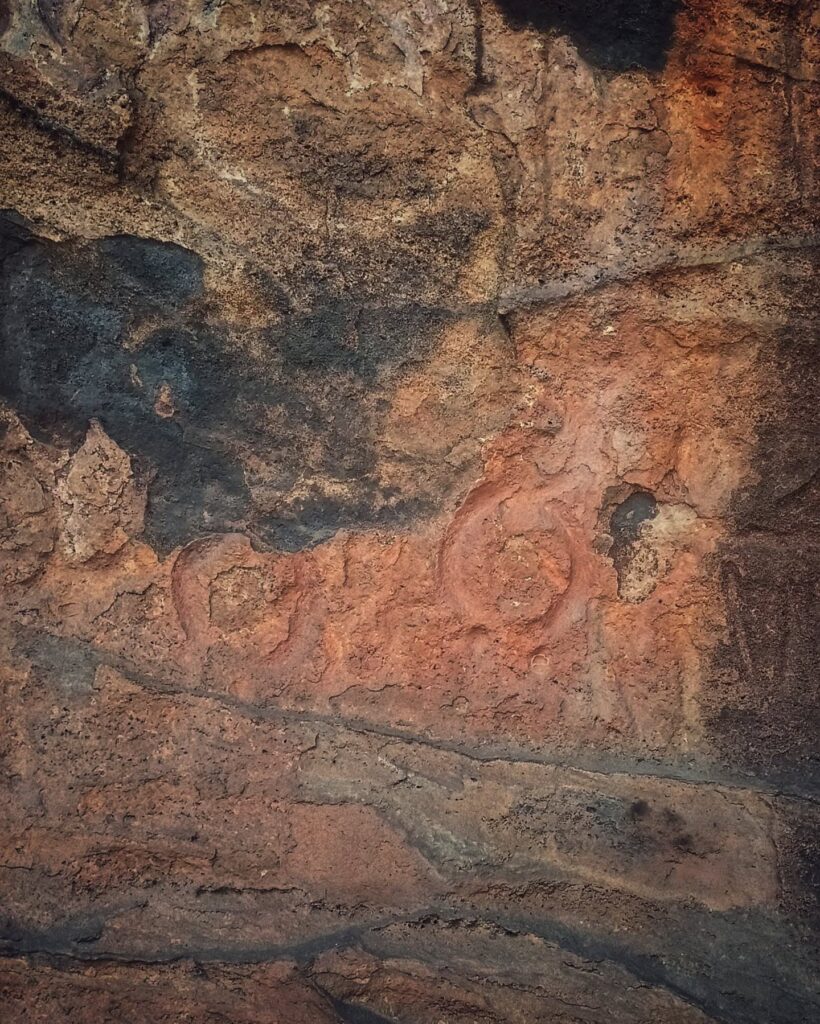
- Linear and circular symbols
- Repetitive patterns
- Humanoid and geometric figures
🗝️ Are They a Script?
Many scholars argue these symbols were early attempts at writing, possibly used for:
- Tribal communication
- Marking territory
- Religious symbols or rituals
- Calendrical or counting systems
Though not deciphered, the inscriptions have drawn comparisons with early Harappan signs and proto-Brahmi writing systems.
🏞️ Life in Bikramkhol – What the Site Tells Us
The artifacts and layout of the site suggest that it was a permanent or semi-permanent dwelling for prehistoric people.
🛖 Key Features of Ancient Life at Bikramkhol:
| Aspect | Evidence Found |
|---|---|
| Shelter | Natural cave with overhang, protected from weather |
| Food Practices | Animal bones, remains of wild berries, and stone pestles |
| Tool Usage | Cutting tools and engravers for inscription and survival |
| Community Life | Symbol clusters indicate social communication or gatherings |
The cave was likely inhabited by a small tribe or group that practiced hunting, gathering, and perhaps early forms of cultivation.
🌳 Natural Environment and Ecology
Bikramkhol is surrounded by a dense deciduous forest, full of native flora and fauna. The region supports:
- Sal, mahua, and bamboo groves
- Birds, monkeys, and deer
- Medicinal herbs and wild fruits
The natural water sources nearby would have supported early human settlements, and the forest continues to protect the cave like a natural fortress.
📍 How to Reach Bikramkhol Cave
🛣️ Travel Details:
| From | Distance | Route & Transport |
|---|---|---|
| Jharsuguda Town | ~25 km | Via Belpahar–Lakhanpur Road; taxis available |
| Belpahar | ~10 km | Closest town; buses, autos, and shared cabs |
| VSS Airport | ~45 km | In Jharsuguda; taxi to Belpahar/Bikramkhol |
| Railway Access | Belpahar Station | Frequent trains from Jharsuguda and Sambalpur |
After reaching the base village, a short 1.5 km uphill trek takes you to the cave.
🧭 Best Time to Visit
Bikramkhol is open year-round, but the best experience comes in cooler months when trekking and exploration are comfortable.
| Season | Months | Experience Summary |
|---|---|---|
| Winter | Nov – Feb | Best time; clear skies and cool weather |
| Monsoon | Jul – Sept | Lush greenery but trails can be slippery |
| Summer | Apr – Jun | Hot and humid; less recommended |
🎒 What to Carry While Visiting
Given its forested and somewhat remote nature, visitors should prepare accordingly:
| Item | Purpose |
|---|---|
| Water and Snacks | No shops nearby |
| Comfortable Shoes | Required for trekking over uneven terrain |
| Hat/Sunscreen | Protection from sun during hike |
| Camera/Phone | For photography and documentation |
| Torch/Flashlight | Useful for exploring cave interior |
| Guide or Local Escort | Helps interpret symbols and ensures safety |
🎭 Cultural and Spiritual Legacy
Though primarily an archaeological site, Bikramkhol also holds spiritual value for locals. It is believed that the cave had ritualistic importance for ancient tribes.
- Local Tribes: Binjhal, Gond, and Kisan communities revere the site.
- Ritual Practices: Some symbols are interpreted as connected to sun worship and fertility rites.
- Festivals: A few community festivals are organized annually near the site, integrating tribal dance and folklore.
🛕 Nearby Attractions to Explore
Make your visit more rewarding by exploring these nearby places:
| Place | Distance | Highlights |
|---|---|---|
| Koilighughar Waterfall | ~20 km | Scenic fall with a Shiva lingam inside a cave |
| Jhadeswar Temple | ~25 km | Major Shiva temple, ideal for spiritual travelers |
| Guja Pahad Hills | ~18 km | Forested hill area, good for trekking |
| Padampur/Bhikampali | ~30 km | Believed birthplace of Guru Padmasambhava |
🧪 Why Bikramkhol Matters – Historical Significance
Bikramkhol is more than an archaeological curiosity—it is evidence of Odisha’s deep human history that stretches far beyond empires and kings.
📌 What Makes It Important:
- One of India’s oldest sites of symbolic writing
- Proof of early settled life in Eastern India
- Connects Odisha with prehistoric literacy and culture
- A key site for understanding tribal and proto-historic societies
It stands as Odisha’s answer to Bhimbetka (Madhya Pradesh) and should be developed into a national heritage and research site.
🛡️ Preservation and Future Potential
Sadly, like many lesser-known historical sites, Bikramkhol is under threat due to:
- Lack of official conservation
- Negligible promotion or tourism infrastructure
- Vandalism and weather erosion
✅ What Can Be Done:
| Recommendation | Impact |
|---|---|
| Declare it a protected ASI site | Enable preservation and funding |
| Install interpretation boards | Educate visitors and students |
| Develop eco-tourism trails | Boost local economy and awareness |
| Partner with universities | Enable archaeological research |
🧡 Conclusion: Odisha’s Silent Prehistoric Storyteller
In a land known for Jagannath, Kalinga war, and classical temples, Bikramkhol whispers an older story—of hunter-gatherers learning to live, love, and leave behind messages for the future.
This cave isn’t just a shelter of the past—it’s a symbol of human evolution, art, language, and resilience. As Odisha progresses into the future, embracing its ancient heritage through places like Bikramkhol will reconnect its people to a legacy that predates even history books.
If you’re a traveler, historian, student, or seeker—*Bikramkhol is waiting silently in the hills to tell you its story.
Follow our Facebook page
Koilighughar-The Beauty of Nature
Other Links
